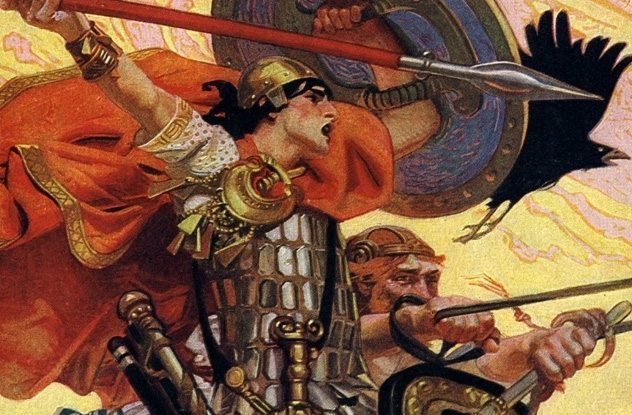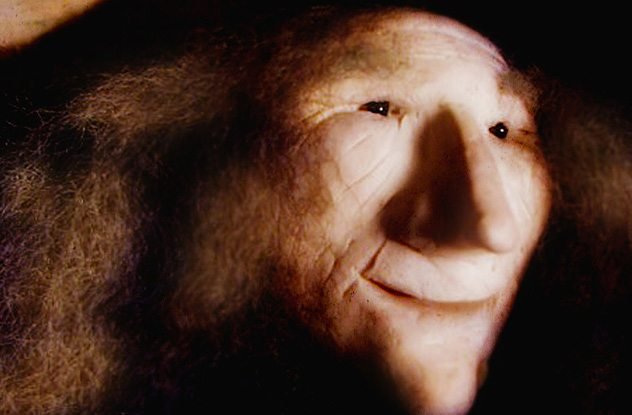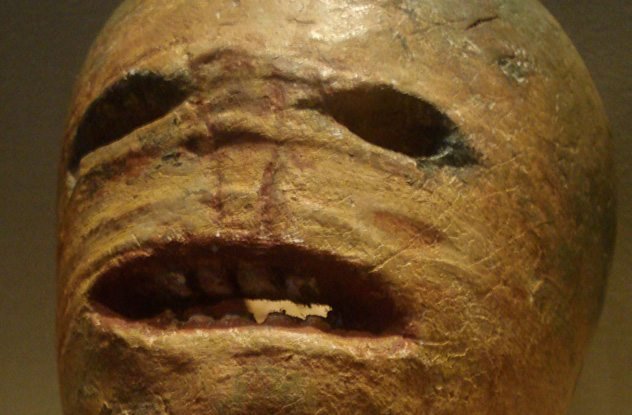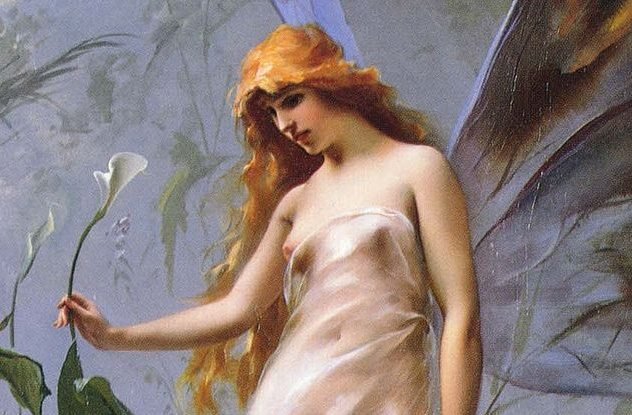1. Child Sacrifice

In the earliest of days, Samhain may have been a time of child sacrifice. Irish legends talk about a time when gods demanded sacrifice during the festival. One legend says that the people had to give up two-thirds of everything they owned at the beginning of winter, including their corn, their milk, and their children. Another article, written by a Christian monk, claims that at a place call Mag Slecht, there was once an idol to the deity Cromm Crauch. According to the monk, this altar was used to sacrifice children during Samhain. “They slew their hapless firstborn with much wailing and peril,” the monk writes, “to pour their blood around Cromm Crauch.”
2. People Cross-Dressed

It wasn’t just the line between living and dead that blurred. Somewhere along the line, people started using Samhain to blur the lines between genders, too. Samhain, and later Halloween, were celebrated with men in drag wandering the streets.By the mid-19th century, most groups that went door-to-door on Halloween predominantly consisted of men dressed as women—“hags,” as they were called in Wales. These hags would knock on people’s doors and ask for food or hospitality.If a home was particular dirty, the men dressed as women would come inside and start sweeping, humming “mum-m-m” as they worked like a disapproving wife.
3. People Dressed Up As The Dead

Costumes were a part of Samhain, just like modern Halloween. In those days, though, nobody dressed up as a superhero—they dressed as the dead. People would paint their faces black and put on disguises made out of straw, believing the clothes would make the spirits who roamed the earth believe they were one of them.Others put on the skin of freshly slaughtered animals. Samhain was a time when masses of animals were slaughtered to stock up for the winter, and the first sound that marked the beginning of the celebrations was the squeals of dying pigs. To avoid the touch of the wandering dead, people would take animals skulls and skins and fashion them into demonic-looking costumes.
4. he Ritualistic Murder Of Kings

In the bogs of Ireland, dead bodies have been found, still perfectly preserved. Their skin is covered in a thick layer of black peat that has kept the flesh from decomposing. The faces they wore in life are the same today, hundreds of years after their death, and even the hairs on their heads are still intact.Many of the bodies aren’t there by chance. Archaeologists believe that these bodies are the remnants of a ceremonial sacrifice. Clothes and grooming reveal that these dead were of the ruling class, fitting into legends about the ritualistic murder of kings committed on Samhain.If the year was a hard one, tormented by plagues or famines, the people would hold the kings responsible. The failed king would be sacrificed and replaced, and his body would be thrown into the bog.
5. Fairies Kidnapped People

During Samhain, fairies would leave their homes and roam the world of the mortals. That might sound like a magical moment, but these fairies weren’t Tinkerbells. They were horrific monsters, and this was one of the most terrifying parts of the holiday.The fairies, led by the King of the Dead, would ride on storm clouds with an army of hellhounds to gather the newly dead. During Samhain, though, they were less discriminate. Sometimes, they would pull the living along with the deceased and drag them to the afterlife.On the day of the festival, people would stay clear of fairy mounds, the hills that dot the Irish landscape, fearing that one would catch them if they strayed too close and pull them down into hell.
*source: http://listverse.com/2016/10/31/10-creepy-rituals-we-once-used-to-celebrate-halloween/
Hi! I am a robot. I just upvoted you! I found similar content that readers might be interested in:
http://listverse.com/2016/10/31/10-creepy-rituals-we-once-used-to-celebrate-halloween/
thank you. Best of luck! follow back